A holiday for romantics and nature lovers
- 6 Rooms
- 240 qm Size
- 12 Maximum number of guests
Below manor house with servants' quarters

The baroque manor house was built around 1700 in half-timbered style and extensively restored in 2012-2013. Particular emphasis was placed on faithfully recreating of the nostalgic atmosphere, without sacrificing the comforts of today. This is reflected in the furnishings of the cosy rooms with manor house flair, reminiscent of times gone by, as if the lady of the manor had just left the room. For all friends of the old days, the house offers numerous treasures to discover and enjoy.
The manor house also houses a naturopathy practice run by the owner, which specialises in acupuncture for all acute and chronic illnesses, including wellness offers during a holiday stay.
On certain days, culinary events such as tapas variations in the espresso bar of the old cartwright's workshop and banquets in the ballroom of the manor house are offered.
Check in from 4pm
Check out till 10am
Please note that due to limited availability and high demand, your reservation is only binding after a payment has been made, with which you also accept the booking conditions.
Cancellations made 3 weeks (15-22 days) or more before the booked date are possible, but a cancellation fee of 30% will be charged. For cancellations made 2 weeks (7-14 days) or more before the booked date, 70% of the cost of the stay will be charged and for cancellations made 7 days (0-7 days) or less before the booked date, 100% of the cost of the stay will be charged.
We recommend taking out travel insurance.
| Means of transport / Destination | Location | Distance |
|---|---|---|
| Autobahnauffahrt | Leizen | 16 km |
| Airport | Berlin Brandenburg | 190 km |
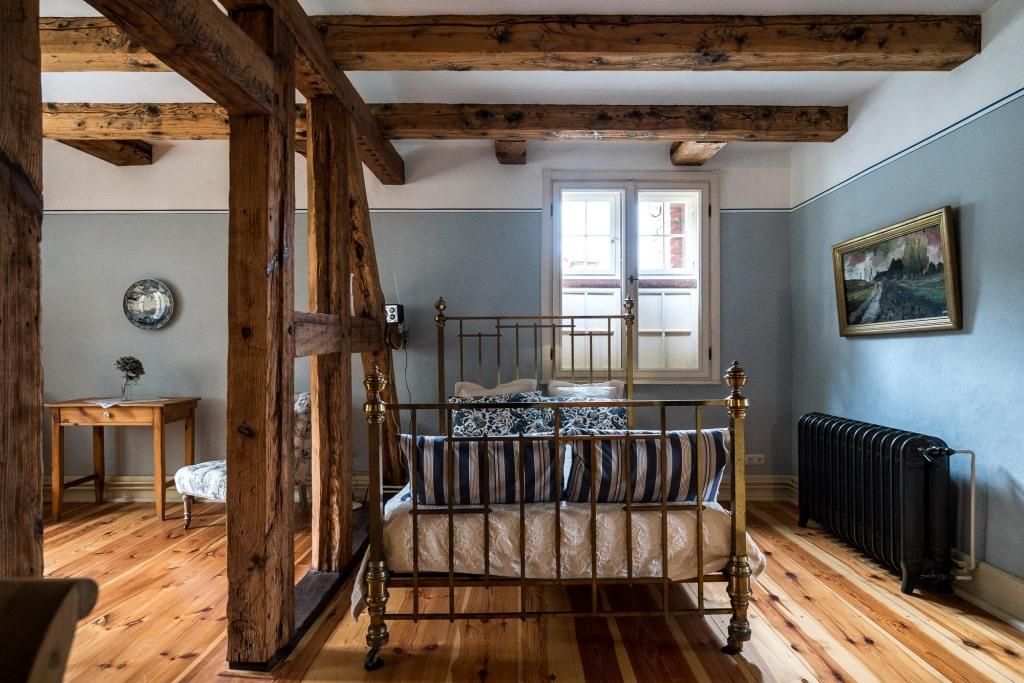
Frisian apartment
The Frisian apartment is located mainly on the park side and is characterised by a light-flooded, large combined living-dining room, which invites you to spend time with up to 4 people in the open half-timbered walls. In the side areas there is a large reading chair and a French double bed. In addition to the kitchen and bathroom, there is a spacious bedroom with two beds, which is located on the round side with an unobstructed view of the small village, from where you will be greeted by the rising sun from the east.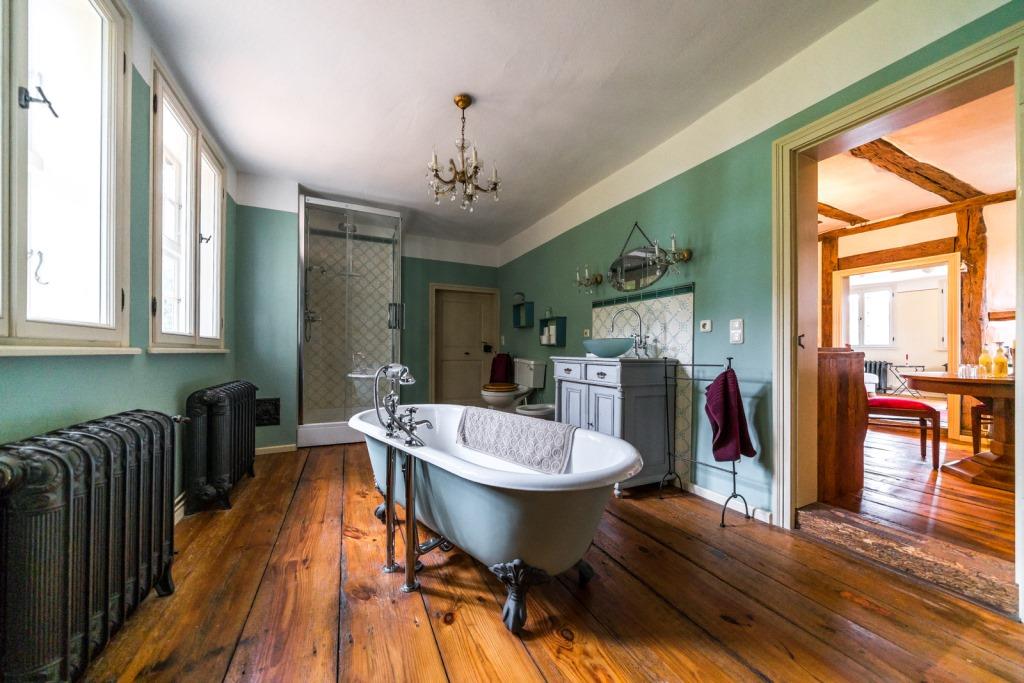
Flamen apartment
The Flamen apartment is mainly on the roundabout side and is characterised by the cosy kitchen-diner for up to 4 people and the luxurious nostalgic bathroom with a free-standing cast-iron bathtub with a view of the park and a bidet. Next to it is the classic living room with a sunny south-facing window and a French double bed. The bedroom with a large double bed can be reached from both the living room and directly from the upper floor. The apartment is also suitable for tall guests (extra-long beds with 220cm, extra-high shower, toilet and washbasin and kitchenette).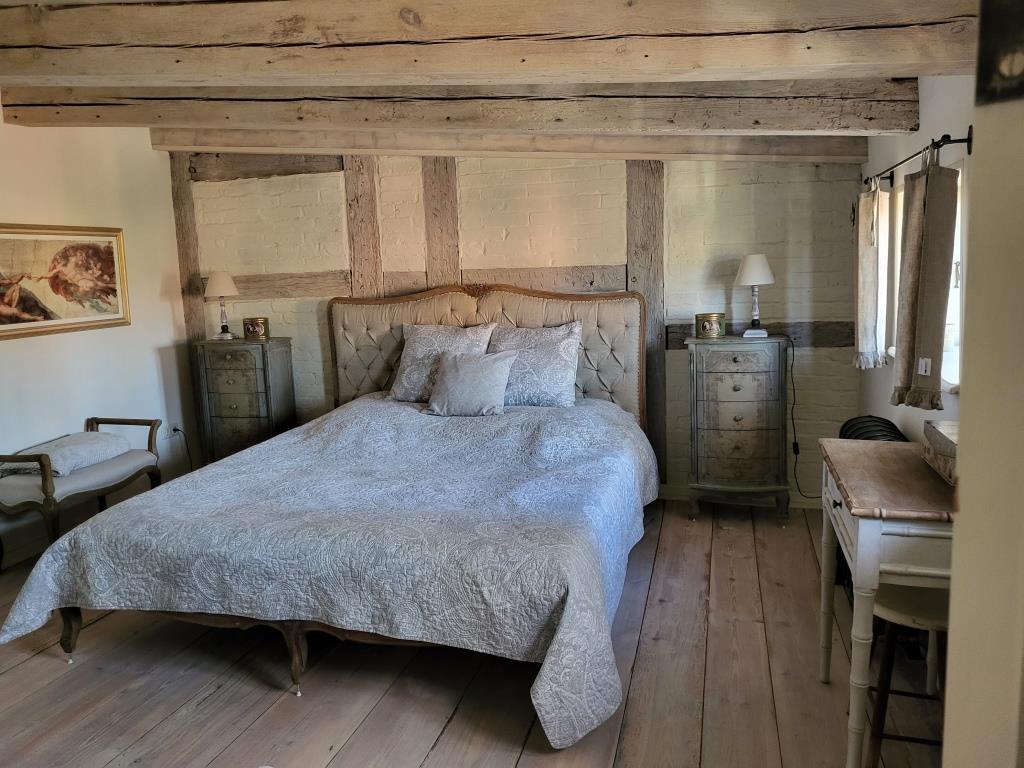
Staff apartment
The staff apartment is located in the annexe to the left of the manor house and has a separate entrance with its own staircase, which is historically very steep. All rooms have park-facing windows and the kitchen lets you enjoy the morning sun from the window sill. The bedroom is furnished with a comfortable double bed and a reading chair. In the sunny living room, which has three windows, there is a table with four chairs and another French double bed. Both the kitchen and the bathroom have separate access from both rooms. The staff apartment is suitable for up to 4 people.The room/apartment/property is equipped with
- WLAN
- WLAN in the whole house
- Heating
- Renovated/newly refurbished
- Antique furnished
Bedroom
- Room size over 20m2
- Double bed
- Linen
- Extra cushions and blankets
- Baby cot
- Baby cot
- Writing desk
- Electric kettle/Coffee machine
- Final Cleaning
Bathroom
- Shower
- Bathtub
- WC
- Towels
- Hairdryer
Culinary
- Local products
Garden
- Sunbathing area
- Sunbed
- Park
- Outdoor dining area
Children
- Playground
- Children's high chair
Kitchen
- Coffee machine
- Electric kettle
- Stove
- Oven
- Dishwasher
- Toaster
- Fridge
- Fridge with freezer
Others
- not barrier-free
- Non Smoking
- Pets welcome with extra cleaning fee
- Events
- Forest experience
- Parking area
In the surrounding area
- Mountainbike/Cycling
- Lake
- Hiking
- Culture
- Riding
- Golf
- Cross country skiing
Payment
- Online payment/credit card
Manor house built in 1908 with veranda
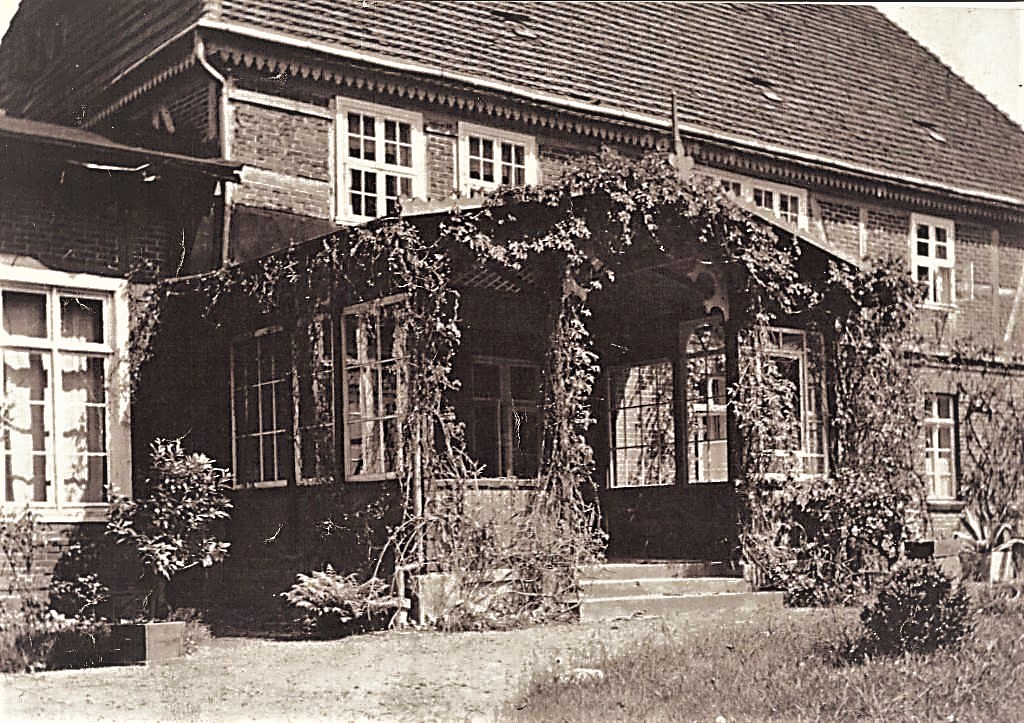
The area and the settlers living there were first documented in 1344, when Prince of Werle lent the area to Andreas Flotow of Stuer. In the following years, several lords of the manor ruled over the area, but most of them did not live there. Another Low German document from 1464 exists in which Henry the Younger, Duke of Mecklenburg, Count of Schwerin, Prince of Wenden, confirms an earlier documented pledge of the cousins Philipp and Hans Priegnitz zu den Vinken over the district with forest, pastures and fields at Below to the city of Wittstock.
During the Thirty Years' War and the years that followed (1618-1648), the manorial rights were split up with several part-owners.
In 1679, the landowner of Ludorf and other estates, Count von Knuth, became interested in the property and began building the manor house in Below in a baroque half-timbered style around 1680. He finally bought the property in 1689, including the church patronage, and in 1695, like other estates, converted it into an allodial estate, whereby he was freed from the feudal obligations as free property and it became future hereditary property. In 1720, he sold his allodial estate Below, along with the nearby village of Grabow and the church patronage, for 7,000 Reichstaler to Captain von Seitz, who took up residence in the manor house in Below. He built several buildings around a square courtyard and founded a glassworks. In 1741 he extended the manor house by two window axes; a half-perspective map of the noble estate of Guthe Below from 1768 exists. In later years, a servants' house was added on the southern side and a ballroom on the northern side. The design of the manor park as an English landscape park probably also dates from this period.
In the following years, the estate was sold several times, mostly due to financial difficulties, until it was expropriated in 1946 and subjected to land reform, when it was divided into 37 parts. In the post-war period, the manor house served as accommodation for many expellees and also housed a co-operative store and a doctor's practice during the division of Germany.
The Below manor house has been back in private hands and under heritage protection since 1991. The current owners purchased it in 2011 and have since been carrying out a gradual and careful renovation and reconstruction of all existing areas.
On 10 September 2024, a visitor who was born in the manor house reports: ‘I was last in the manor house at the end of the 1970s to visit my parents. Wow!!! What a transformation. We admired the drive and courage to transform this property into a piece of jewellery. Mrs Klemm must have felt the spirit of our grandmother...’

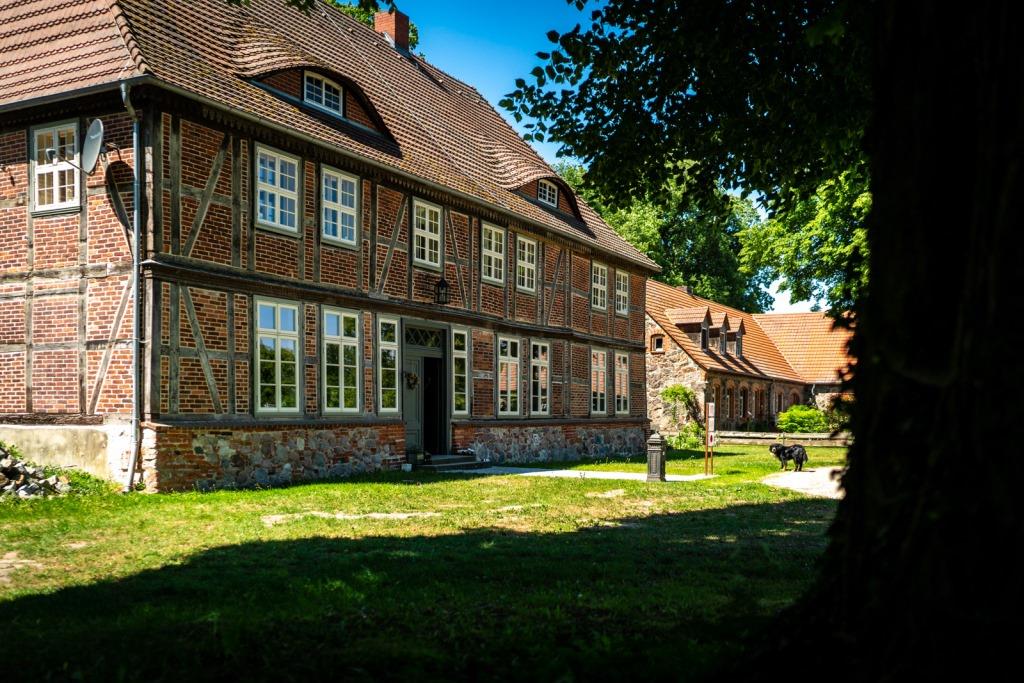
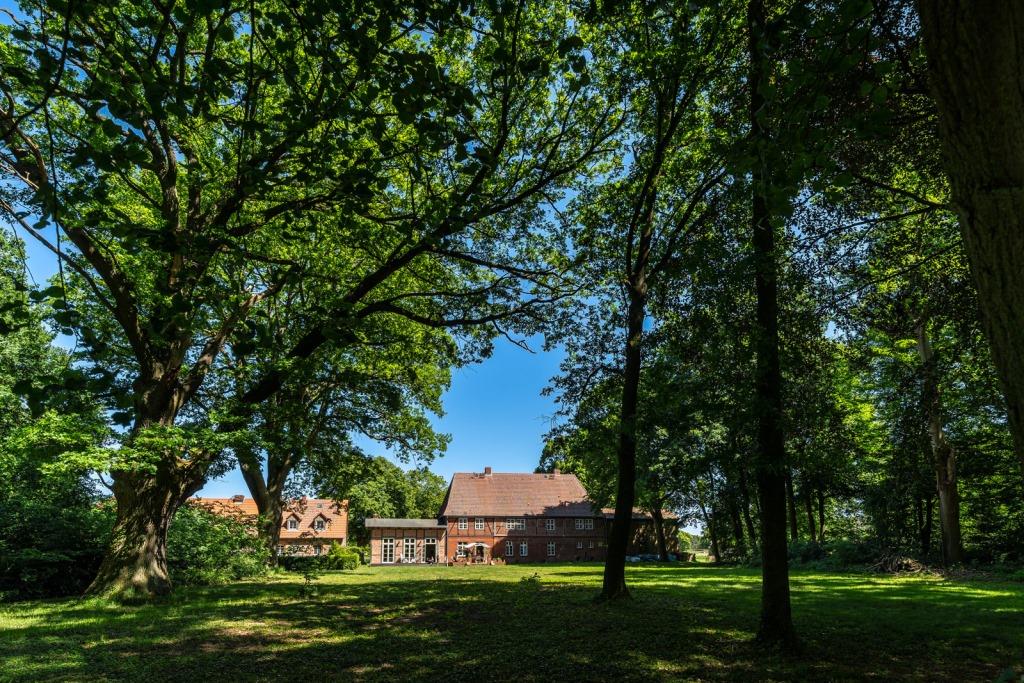
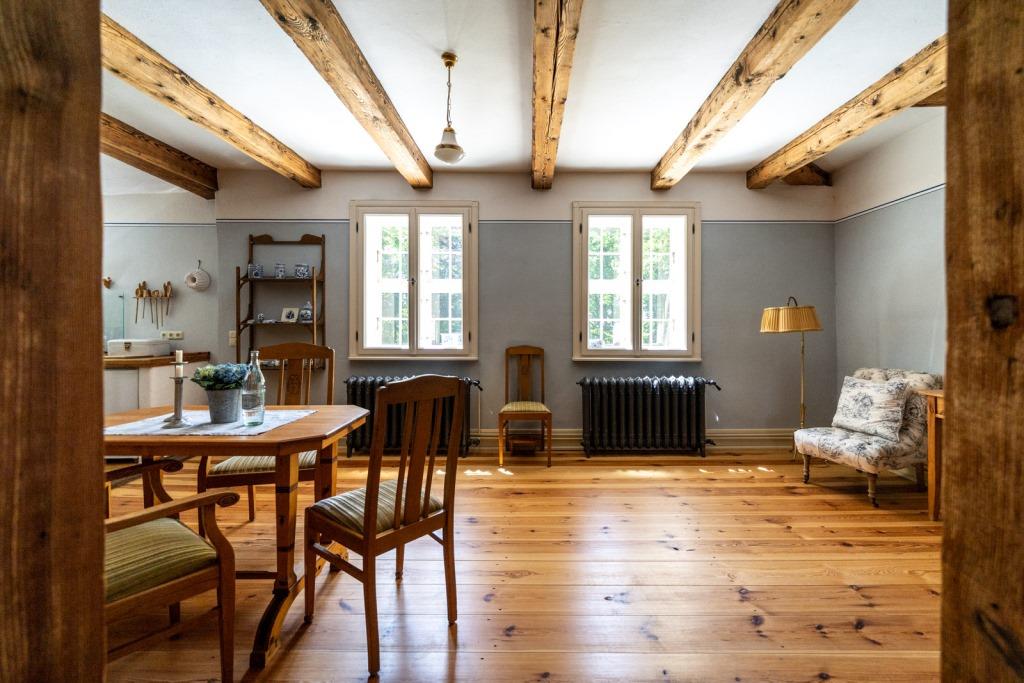
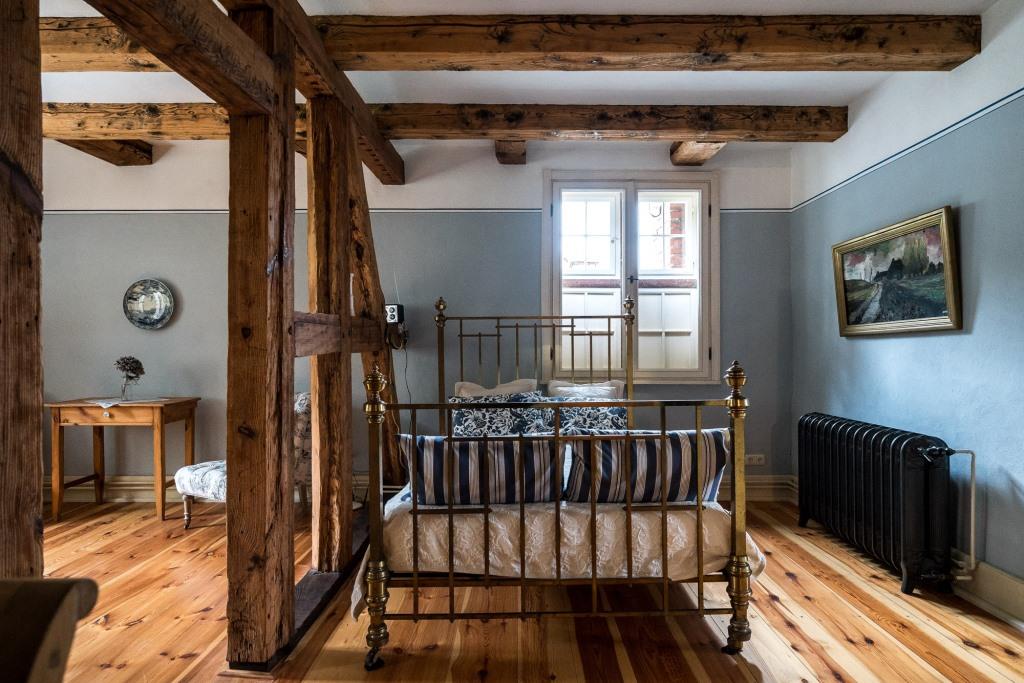 >
>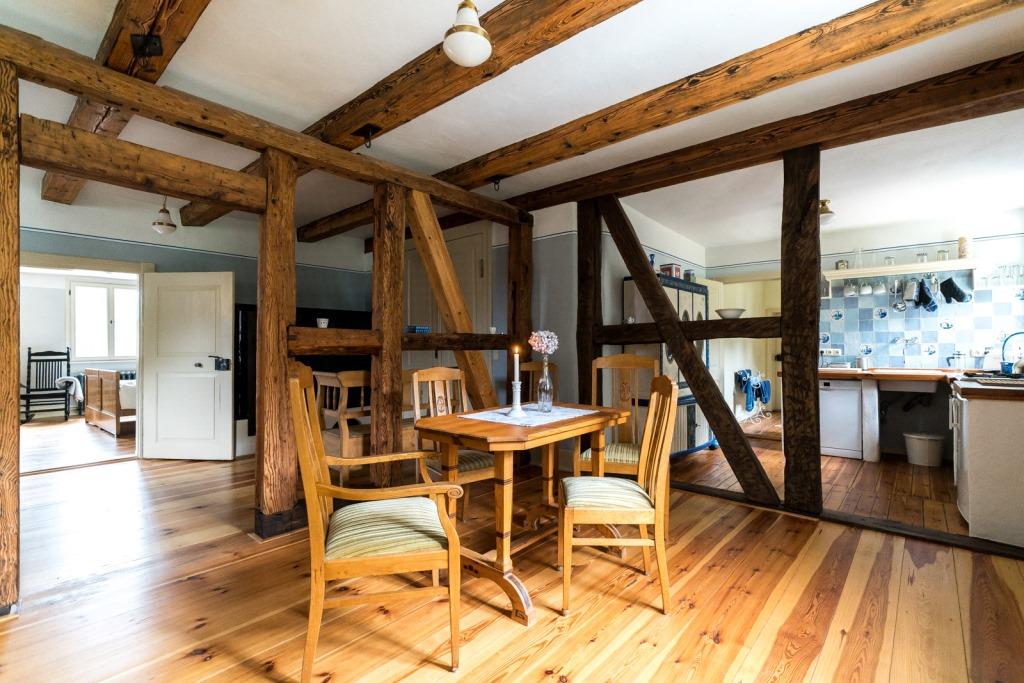
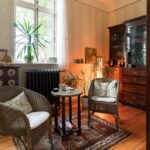
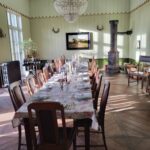

Schreibe einen Kommentar